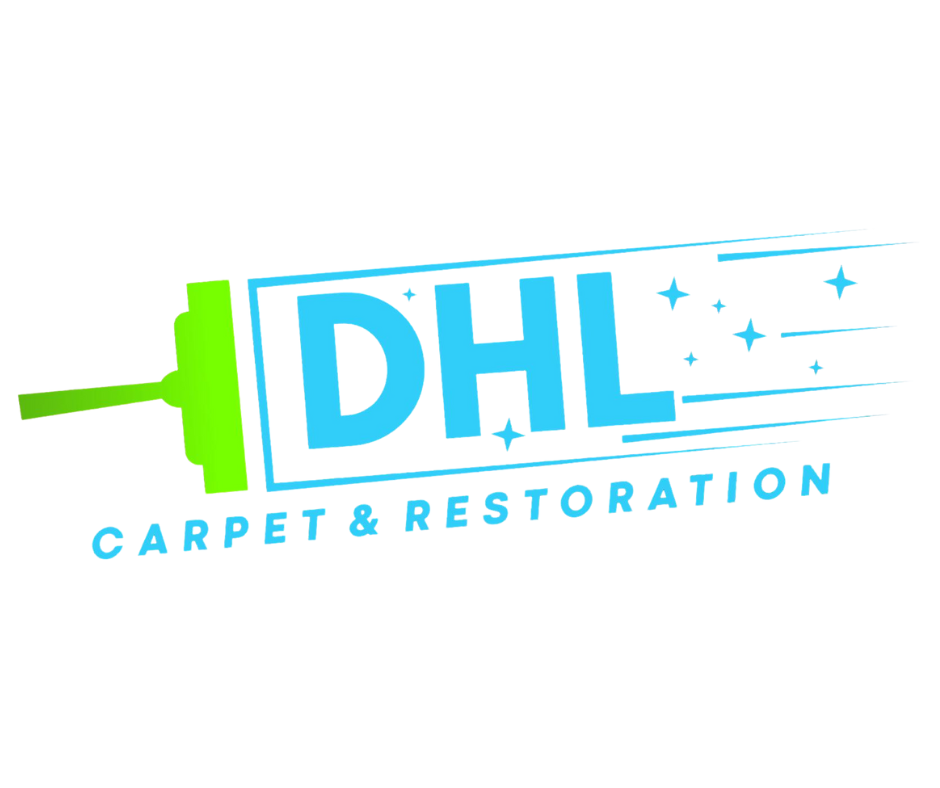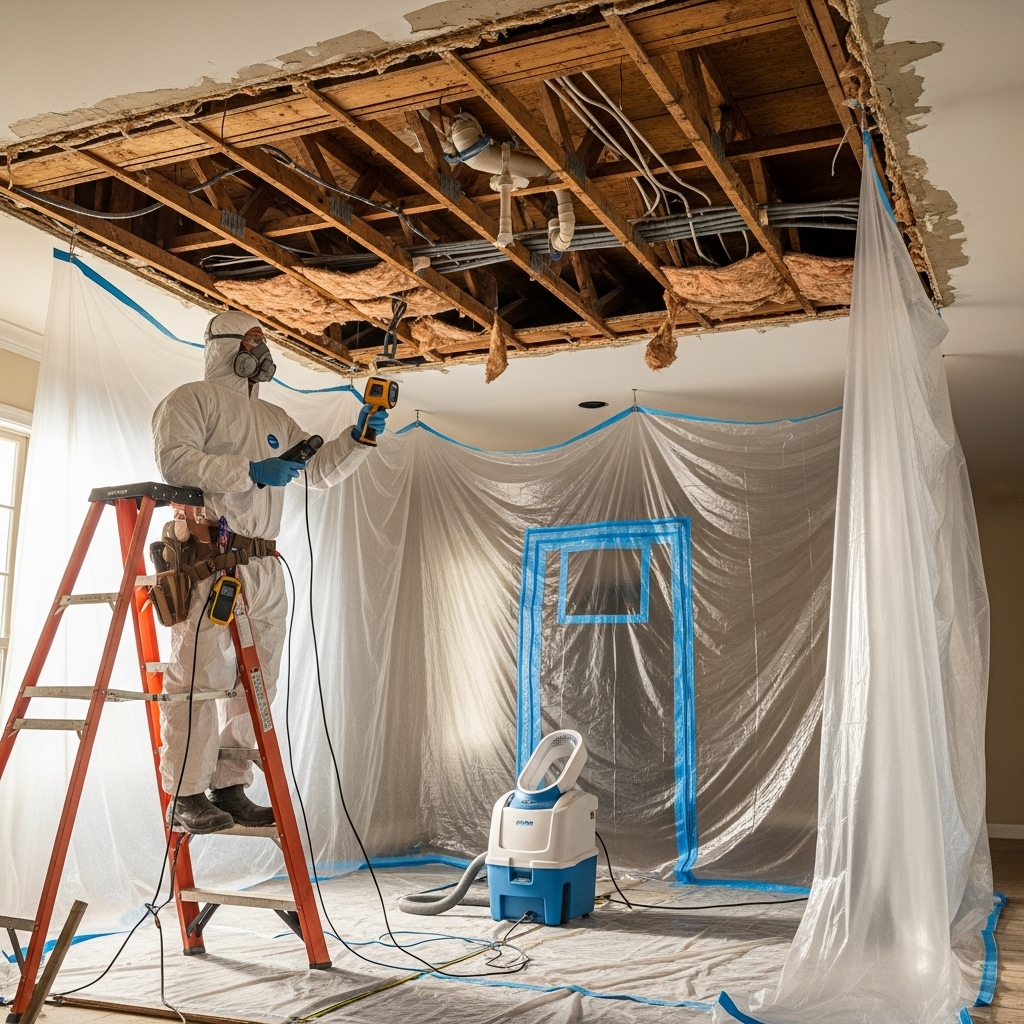Ceiling mold can appear quickly after a roof leak, plumbing failure, or condensation event, and it often spreads out of sight in insulation and cavities. In New Jersey, seasonal storms and temperature swings make upper-floor and attic assemblies particularly vulnerable. Addressing ceiling mold requires fast containment, safe removal of affected materials, thorough drying, and a plan to prevent future moisture. This guide explains common causes, professional steps to correct the problem, and practical solutions for long-term protection. When it is time to act, many property owners choose local specialists who offer comprehensive mold mitigation services with the equipment and experience to handle ceiling assemblies safely.
Unlike surface-level cleaning, proper mitigation protects the rest of your home or business from cross-contamination, documents progress, and verifies dryness before finishes are restored. Because ceilings involve gravity, electrical fixtures, and insulation, careful sequencing matters.
Why Ceiling Mold Appears
- Roof leaks from damaged shingles, flashing, or ice dams
- Plumbing leaks from supply lines, valves, or drain lines in upper floors
- Condensation on cold ducts or poorly insulated attic surfaces
- Bathroom exhaust fans that vent into the attic rather than outdoors
- HVAC imbalances that trap humidity near ceilings
- Wind-driven rain entering through vents or siding penetrations
Early signs include stains around light fixtures and ceiling edges, peeling paint, musty odors, or discolored insulation visible from the attic. Prompt action prevents sagging drywall, damaged trim, and wider spread.
Professional Mitigation Process for Ceilings
-
Assessment and moisture tracing: Technicians identify the water source—roofing, plumbing, or ventilation—using meters and thermal imaging.
-
Containment and protection: Poly barriers and negative air isolate rooms. Floor coverings and furnishings are protected before any removals.
-
Safe access and removal: Ceiling openings are created under containment. Wet or colonized drywall, insulation, and ceiling tiles are removed as needed.
-
Electrical and HVAC coordination: Fixtures are inspected, and duct condensation issues are addressed with insulation or routing corrections.
-
Cleaning and HEPA filtration: Surfaces are HEPA vacuumed and cleaned. Air scrubbers run continuously to remove airborne particulates.
-
Drying and verification: Structural members and cavities are dried to target moisture levels and verified before closing up the ceiling.
Special Considerations in New Jersey Homes and Buildings
- Ice dams on eaves can push water under shingles; attic air sealing and insulation help prevent this
- Wind-driven rain can force water into soffits and gable vents if screens or baffles are compromised
- Older buildings may have multiple layers of finishes; careful removal preserves intact materials
- Multi-family properties require coordination with building management for access and scheduling
Preventing a Repeat Problem
- Ensure bathroom and kitchen exhausts vent outdoors and run them during and after use
- Add or repair roof flashing and seal penetrations around vents and chimneys
- Insulate cold ducts and fix air leaks in attic assemblies
- Balance HVAC to maintain comfortable humidity year-round
- Inspect roofing and gutters seasonally and after severe weather
Selecting a Ceiling Mitigation Specialist
Choose a provider with experience opening and restoring ceiling assemblies. Ask about electrical safety practices, attic access, and documentation. Clear communication about containment, debris handling, and drying targets is essential. Many property owners partner with New Jersey teams who offer documented, end-to-end mold mitigation services that coordinate trades, protect interiors, and verify dryness before finishes are replaced.
Frequently Asked Questions
Is it safe to live or work under a ceiling with suspected mold? Limit use of affected rooms until containment is established. A professional assessment will determine safe access and sequencing.
Do stained ceilings always mean mold? Not always. Staining indicates moisture; professionals verify conditions and determine whether mold has colonized materials.
Will ceiling repairs be extensive? Scope depends on how far moisture traveled and how quickly the issue was addressed. Early intervention often limits removal to localized areas.
Can insulation be saved? Waterlogged or colonized insulation is typically removed and replaced. Dry, uncontaminated insulation nearby may be left in place after verification.
How do you prevent dust and debris from spreading? Containment, negative pressure, and HEPA filtration confine particulates to the work zone and protect adjacent rooms.
What if the source is in the roof? Roofing repairs should be coordinated promptly. Temporary measures may be used to stabilize conditions until permanent fixes are made.
How long does drying take? It varies with material type, temperature, and airflow. Technicians monitor moisture and adjust equipment to reach targets efficiently.
From Discovery to Restoration
Ceiling mold is best handled with a methodical plan: identify the source, protect the room, remove affected materials, clean thoroughly, and dry the structure. Once conditions are verified, finishes can be restored with confidence. If you see staining or smell musty odors near ceilings, act quickly to prevent wider damage. Connect with New Jersey professionals who deliver reliable mold mitigation services for ceiling assemblies and return your space to clean, safe conditions.

